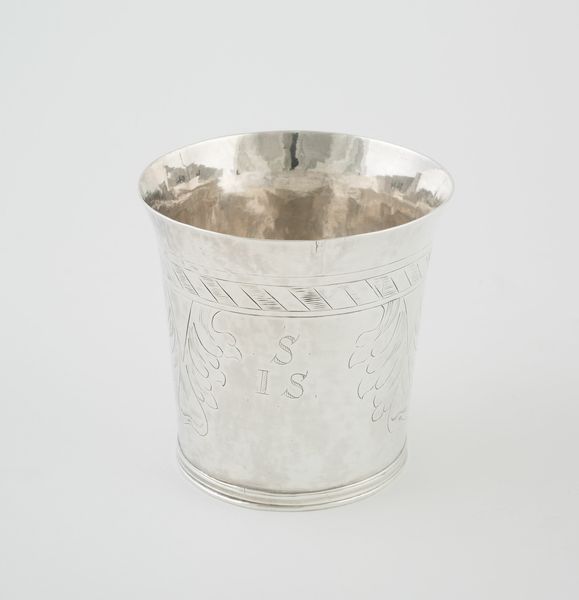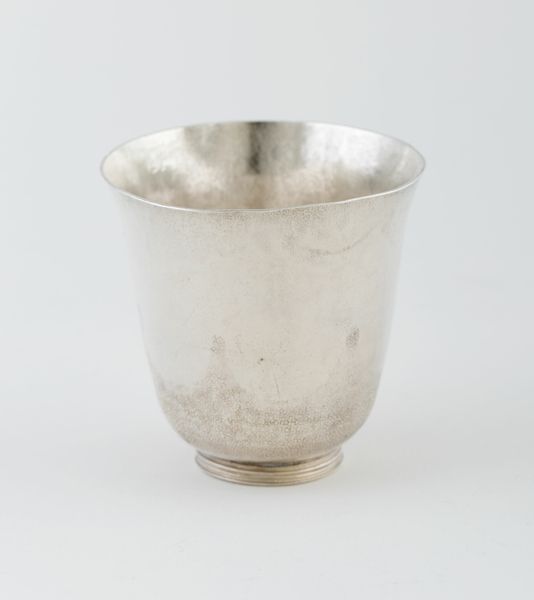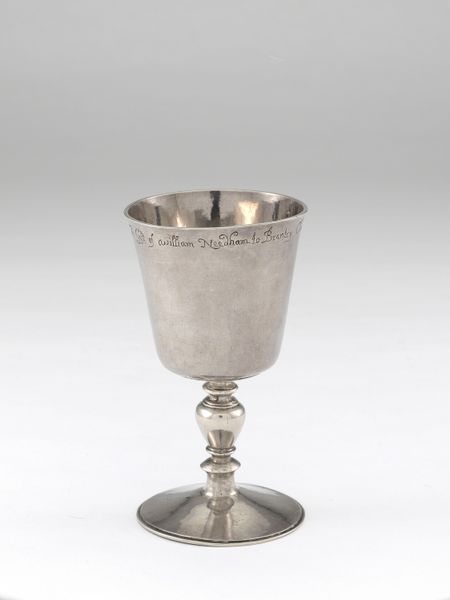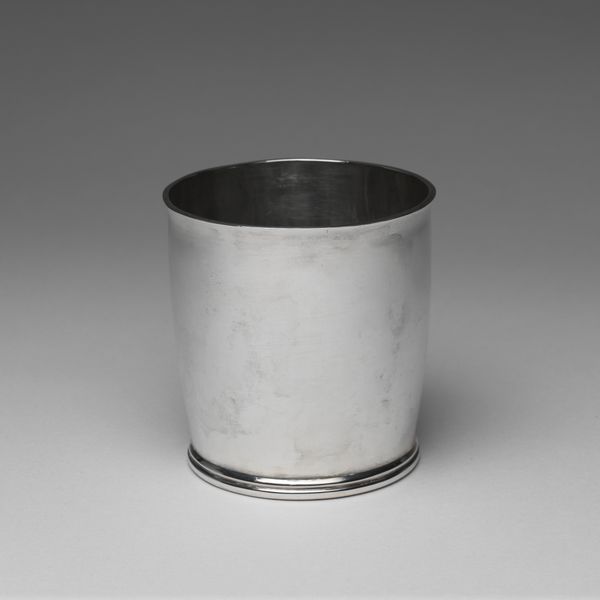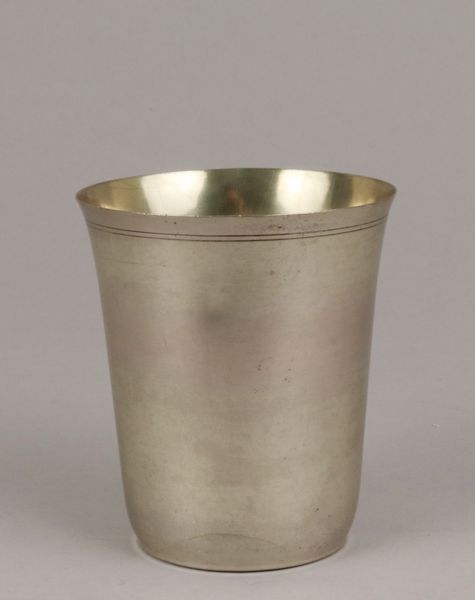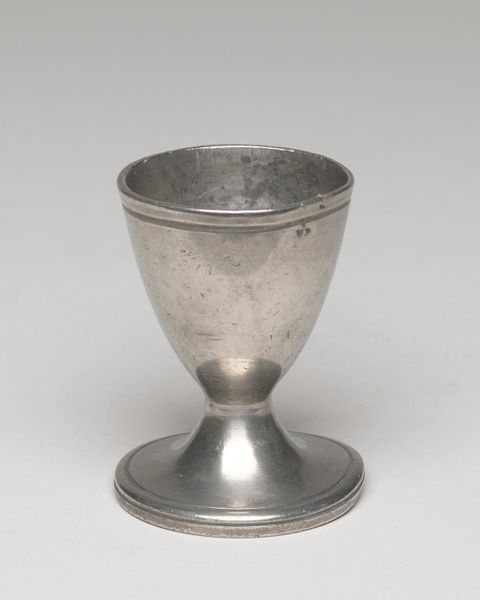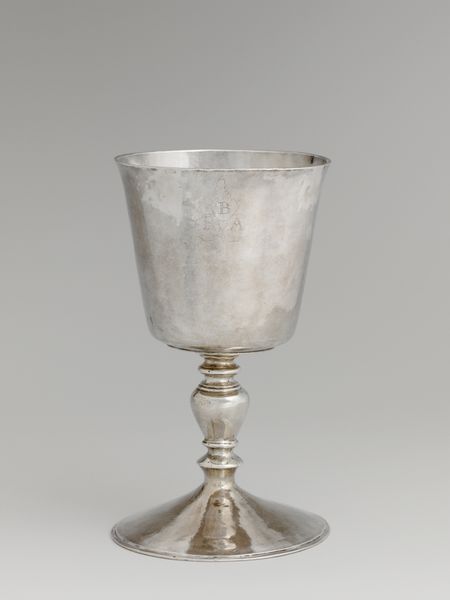
silver
#
silver
#
decorative-art
Dimensions: 8.1 × 8.3 cm (3 3/16 × 3 1/4 in.)
Copyright: Public Domain
Curator: This is "Beaker", an exquisite example of decorative art, fashioned from silver, crafted sometime between 1818 and 1842 by William Gregg, here in The Art Institute of Chicago's collection. Editor: It’s so unassuming, yet catches the light beautifully. Sort of a quiet dignity about it. Makes you wonder what it has held over the centuries – libations, tears, maybe even a dash of moonshine! Curator: Indeed. The beaker’s form, a gently curved cylinder, showcases the silversmith’s mastery. Observe how the plain surface enhances the reflective qualities of the metal. Note the inscription toward the lower end and its symmetry – a clear devotion to the fundamentals of composition and form. Editor: The subtle wavering near the brim gives it a handmade quality, despite the precision. The tiny ripples within are like liquid moonlight itself. You can almost see the artisan at his bench, bringing this piece to life. Imagine those quiet hours in the workshop! Curator: From a structural standpoint, its understated elegance is quite effective. The circular foot and upper rim define its boundaries while also reinforcing the overall symmetry of its body. An emphasis on pure geometry, wouldn't you agree? Editor: I love thinking about the rituals around something like this. Was it for toasting? For some solemn ceremony? These objects weren't merely decorative—they witnessed and participated in life. Curator: It allows for formalist analysis as well as subjective interpretation. Gregg created something enduring, reflecting principles that reach back to antiquity. Editor: In a way, it transcends function. The Beaker becomes a little vessel holding memory, stories whispered from generation to generation through the language of touch and light. Its purity is a balm to the modern eye.
Comments
No comments
Be the first to comment and join the conversation on the ultimate creative platform.

